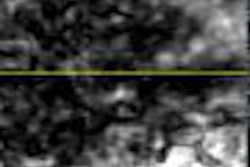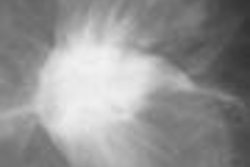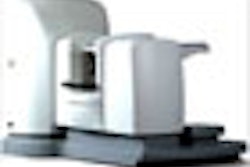SAN ANTONIO - The American Cancer Society has given its stamp of approval to mammography plus MRI screening in women with a higher risk for breast cancer, but what's the economic impact of that dual-modality paradigm?
According to a presentation last week at the San Antonio Breast Cancer Symposium, the increase in breast cancer detection would justify the high price of the MR exam, although that cost-effectiveness does depend on the specific type of risk a woman carries.
"Even though MRI is more expensive and it is expected to find more false positives, we would expect that MRI would also find more cancer in early stages," said Charu Taneja, a research associate at Policy Analysis in Brookline, MA.
Taneja and her co-authors from Bayer HealthCare Pharmaceuticals in Wayne, NJ, and Yale University School of Medicine in New Haven, CT, developed a model to depict outcomes and costs of mammography plus MRI screening versus mammography screening alone in a cohort of 10,000 women with BRCA1/2 mutations or a high lifetime risk of breast cancer. They presented their results in a poster at the symposium.
For the model, patients were assumed to be 40 years old and have been screened once at model entry. The prevalence of undetected breast (invasive and ductal carcinoma in situ) was assumed to be 2.3%. Based on published research, the sensitivity of MRI and mammography was estimated at 90.2%, while mammography's sensitivity was set at 84.1%.
The model predicted the number of women correctly and incorrectly diagnosed with each strategy, as well as any additional care (further diagnostic evaluation, treatment), patient utilities, and life expectancy. Women whose cancer was not detected at screening were assumed to be correctly diagnosed in the next 12 months although most likely with advanced disease.
Costs included those of initial screening, further diagnostic workup, and treatment. Cost-effectiveness was calculated as cost per quality-adjusted life year (QALY) gained; costs (in 2005 U.S. dollars) and effectiveness were discounted at 3% annually. Taneja said her group estimated the cost of standard mammography at $86 per women and the cost of MRI at $1,038 per women for an initial screening exam.
The results showed that of the 10,000 women 230 would have undetected breast cancer, and MRI plus mammography screening would detect 208 cases versus 92 by mammography alone. MRI and mammography would yield more false positives (37 versus 12 for mammography alone).
The cost of screening would be $1,887 per patient for MR plus mammography compared with $936 for only mammography. MRI and mammography screening would produce an expected gain in (undiscounted) life years of 39.50 versus 39.44 for mammography alone. Cost per QALY gained is $27,634 for women with BRCA mutations, and $59,639 for other high-risk women; overall, cost per QALY gained is $53,878.
"MRI screening, alone or in combination with mammography, is cost-effective in women with BRCA gene mutations," Taneja said. However, she added that screening other high-risk women (family history, previous personal history) with both modalities would be less cost-effective, even assuming a 2% cancer discovery rate. In those cases, the cost-effectiveness of doing an MRI plus mammography would be $72,360 and the cost-effectiveness for using MRI alone in these women would be $73,813.
"In other high-risk women, cost-effectiveness of MRI depends heavily on expected prevalence of previously undetected breast cancer," she said.
By Edward Susman
AuntMinnie.com contributing writer
December 17, 2007
Related Reading
Triple-negative breast cancers show marked clinical features, November 29, 2007
Breast MRI comparable to mammography for detecting later cancers, November 25, 2007
Copyright © 2007 AuntMinnie.com



















